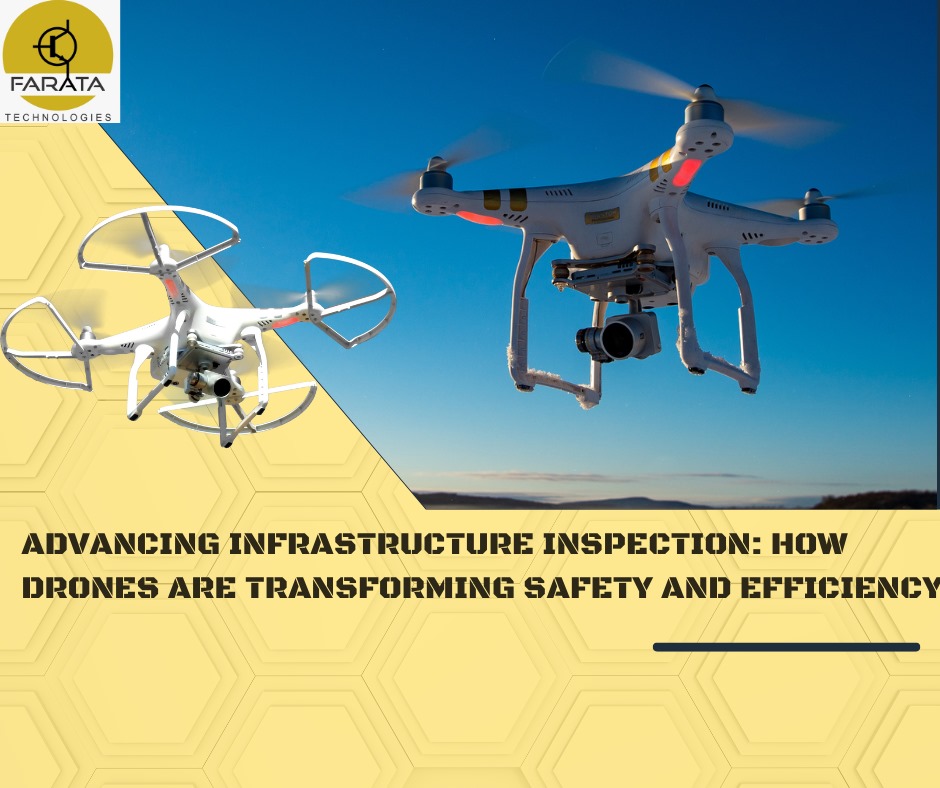
Maintaining the Integrity of Critical Infrastructure with Drone Technology
Introduction
Maintaining the integrity and safety of critical infrastructure, such as bridges, power lines, and pipelines, is paramount for public safety and economic stability. Traditionally, inspecting infrastructure required manual inspections conducted by skilled personnel, often involving significant risks and costs. However, the emergence of drone technology has revolutionized this process, offering a safer, more efficient, and cost-effective alternative. Drones equipped with high-resolution cameras, LiDAR sensors, and other advanced technologies are increasingly utilized for infrastructure inspection, providing detailed assessments while minimizing human risk.
- Enhanced Safety and Accessibility: One of the primary advantages of using drones for infrastructure inspection is their ability to access hard-to-reach or hazardous areas with ease. Bridges, power lines, and pipelines often span vast distances or traverse rugged terrain, making traditional inspection methods impractical or dangerous. Drones can navigate these environments safely, mitigating risks associated with working at heights, confined spaces, or unstable structures. By reducing the need for personnel to physically access hazardous locations, drones enhance safety and minimize the potential for accidents or injuries.
- Efficiency and Cost Savings: Drone-based inspections offer significant time and cost savings compared to traditional methods. Manual inspections typically require extensive planning, manpower, and equipment, resulting in prolonged downtime and high operational expenses. In contrast, drones can rapidly survey infrastructure assets from the air, capturing high-resolution imagery and data in a fraction of the time it would take using conventional approaches. Moreover, drones eliminate the need for costly equipment rentals, traffic control measures, and downtime associated with shutting down infrastructure for inspection purposes.
- High-Resolution Imaging and Data Collection: Drones are equipped with advanced cameras capable of capturing high-resolution imagery and videos, providing detailed visual inspections of infrastructure components. Additionally, drones can be equipped with LiDAR sensors, thermal imaging cameras, and other specialized payloads to detect structural defects, corrosion, or abnormalities that may not be visible to the naked eye. By collecting precise data and imagery, drones enable engineers and inspectors to assess the condition of infrastructure assets accurately, identify potential issues, and prioritize maintenance or repair efforts accordingly.
- Remote Monitoring and Real-Time Analysis: Drone-based inspections facilitate real-time monitoring and analysis of infrastructure assets, allowing for immediate decision-making and intervention. Live video feeds and telemetry data transmitted from drones enable engineers and inspectors to observe inspections remotely, providing valuable insights into the condition of infrastructure in real-time. Furthermore, drones equipped with onboard processing capabilities can perform preliminary analysis of collected data, flagging potential areas of concern and generating actionable reports for further investigation.
- Environmental Impact and Sustainability: Adopting drone-based inspection methods can contribute to environmental sustainability by reducing the carbon footprint associated with traditional inspection approaches. Drones operate on electric power, producing fewer emissions compared to manned aircraft or ground vehicles. Additionally, drones minimize the need for disruptive activities, such as road closures or vegetation clearance, minimizing environmental disturbance and habitat fragmentation. By embracing drone technology, organizations can demonstrate a commitment to sustainability while improving the safety and efficiency of infrastructure inspection processes.
Conclusion
Drones are revolutionizing infrastructure inspection practices by offering enhanced safety, efficiency, and cost savings compared to traditional methods. With their ability to access hard-to-reach areas, capture high-resolution imagery, and facilitate real-time monitoring, drones are transforming how engineers and inspectors assess the condition of bridges, power lines, pipelines, and other critical infrastructure assets. As drone technology continues to evolve and regulatory frameworks adapt, the adoption of drone-based inspection solutions is poised to increase, driving improvements in safety, sustainability, and asset management for infrastructure worldwide.
